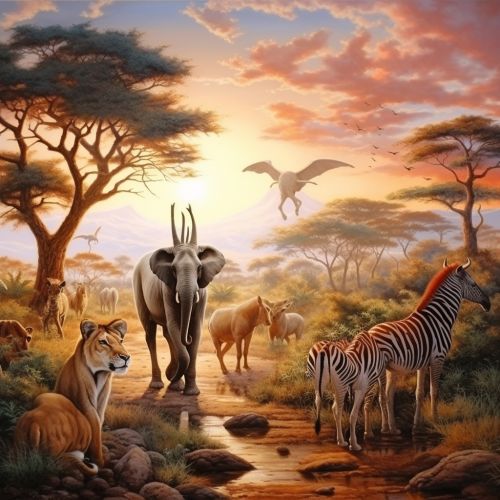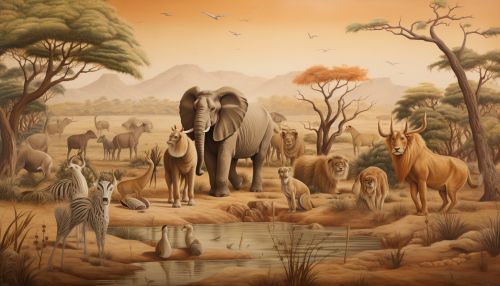African Wildlife
Introduction
African wildlife encompasses a diverse array of species, from the iconic elephant and lion to the lesser-known aardvark and okapi. The continent's unique geographic and climatic conditions have led to the evolution of some of the most remarkable creatures on the planet. This article delves into the intricacies of African wildlife, exploring the various ecosystems, the adaptations of the species, and the challenges they face.


Ecosystems
Africa is home to a wide range of ecosystems, each supporting its own unique community of wildlife. These include the Sahara, the world's largest hot desert, the lush Congo rainforest, the expansive savannas, and the aquatic ecosystems of the Nile and the Great Lakes.
Sahara Desert
The Sahara Desert, spanning over 9 million square kilometers, is home to a variety of species that have adapted to its harsh conditions. These include the fennec fox, the dromedary camel, and the addax, a type of antelope.
Congo Rainforest
The Congo Rainforest, the second-largest rainforest in the world, hosts a rich biodiversity. It is home to species such as the bonobo, the forest elephant, and the okapi, a relative of the giraffe.
Savannas
The savannas, characterized by grasslands with scattered trees, are teeming with wildlife. Iconic species such as the elephant, lion, buffalo, leopard, and rhinoceros—collectively known as the "Big Five"—are found here.
Aquatic Ecosystems
The Nile River and the Great Lakes of Africa support a diverse array of aquatic life. The Nile crocodile, the hippopotamus, and various species of fish and birds thrive in these waters.
Adaptations
African wildlife exhibits a wide range of adaptations to survive in the continent's diverse ecosystems. For instance, the elephant's large ears help dissipate heat, while the fennec fox's large ears help it hear prey moving underground in the desert. The giraffe's long neck allows it to feed on leaves that other herbivores cannot reach, and the hippopotamus's eyes, ears, and nostrils are positioned high on its head so it can see, hear, and breathe while mostly submerged.
Threats and Conservation
African wildlife faces numerous threats, including habitat loss due to deforestation and urbanization, poaching, climate change, and conflict with humans. Conservation efforts are underway to protect these species and their habitats. Organizations such as the African Wildlife Foundation and the World Wildlife Fund work towards preserving Africa's unique biodiversity.
